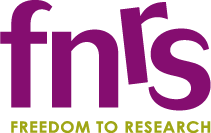In the same section
-
Share this page
Weak IA for Strong LC maps
Description
Access to accurate and detailed land cover (LC) maps is crucial for many applications such as environmental monitoring, land and agricultural policy, population estimation, urban climate modelling, etc. In the remote sensing (RS) community, the approach combining object-based image analysis (OBIA) and traditional supervised machine learning (ML) classifiers such as Random Forest (RF) has been the state of the art (SoA), for many years, for detailed LC
mapping from very-high resolution remote sensing (VHRRS) data. However, during the last decade, deep learning (DL) approaches and more specifically deep convolutional neural networks (CNN) facilitated a breakthrough in the field of computer vision (CV) by beating traditional ML approaches. CNNs also proved their ability to overperform former approaches in the field of RS and is now the new SoA.
Most of the cutting-edge methodological development on CNN occurs in the field of CV and is then applied to the specific characteristics of RS images. However, the technological transfer from the field of CV to RS is not straightforward and many challenges still exist. The goal of this project is to provide solutions to alleviate one of the major issues faced by the RS community when applying cutting-edge DL approaches on VHRRS data for LC mapping,
namely, the difficulty to get access to a large amount of labelled training data.
Period
2020 - 2023
Partners
Laboratory of Image Synthesis and Analysis (LISA) - Université Libre de Bruxelles - Website
Environment observation with complex imagery (OBELIX) - Université Bretagne Sud - Website
Budget
Individual post-doctoral scholarship (~200.000€).
Funding
Research funded by the National Fund for Scientific Research (FRS-FNRS).
